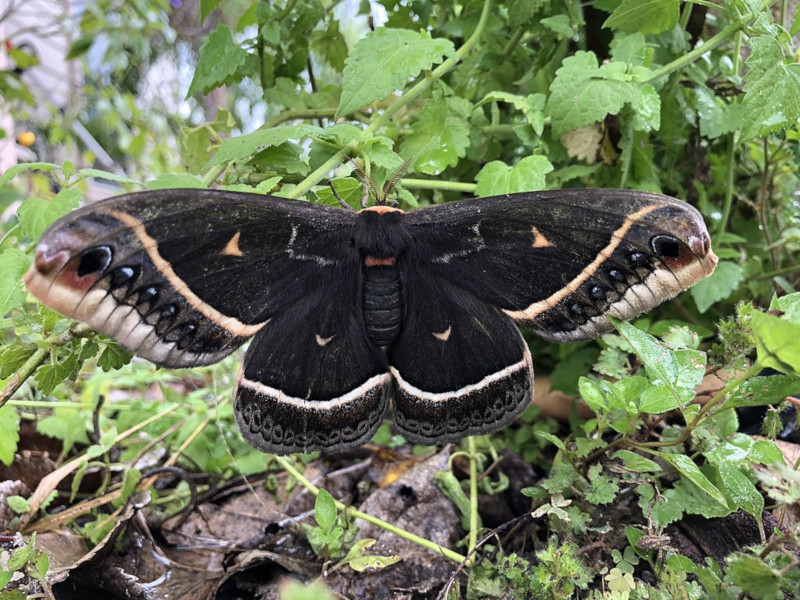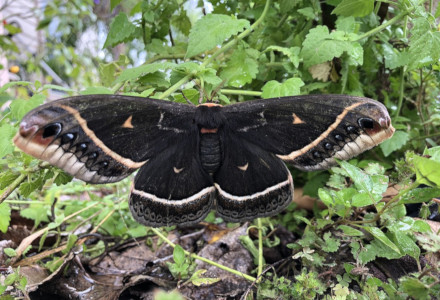
Calleta silkmoth Facts
- The amazing invertebrate with the common name of the Calleta silkmoth remains a truly beautiful variety of the Order Lepidoptera. This truly awesome invertebrate species also holds a few surprises for those who attempt to learn more about it.
- That’s because this simply fascinating creature actually stands out in several very specific ways. Firstly, this breathtaking insect represents the sole member of its scientific genus, named Eupackardia. That alone distinguishes it from many of its peers.
- The renowned British entomologist John O. Westwood, furthermore, became the first person to officially describe this variety of moth. That original description of this species, with the scientific name of Eupackardia Calleta, occurred in the year 1853.
- Secondly, this beautiful form of moth has also long played a key role in certain cultures in its range. That’s because several Native American tribes, such as the Yacqui, historically used its cocoons in the making of ankle rattles and medicinal necklaces.
- These constructions routinely played a part in some of the important ceremonies in their culture. That’s not the end of things, though. Thirdly, and also regrettably, the marvelous Calleta silkmoth appears to have an extremely restricted habitat range.
- Within its range, though, its population appears to be sufficient and stable, at least for the moment. The IUCN therefore has no listing for the moth. It can be nevertheless be considered to be facing the threat of climate change, like many other creatures.
Related Articles
Calleta silkmoth Physical Description
The gorgeous species known as the Calleta silkmoth remains well-known for more than just its great beauty. That’s because, among other factors, it’s also a moderately large type of moth. In addition, like many insects, this species displays the trait of sexual dimorphism.
In the case of this Lepidoptera, however, the physical differences between the genders presents itself in terms of appearance. This holds true due to the fact that mature adults of both genders of this arthropod attain a wingspan that averages about 3.15 – 4.3 in (8 – 11 cm).
Both sexes, furthermore, display the same basic color pattern, with only slight differences. The body remains almost entirely black. The exception is the presence of a small red collar and some red coloring on the rear portion of the large thorax of the invertebrate.
Next, the basic background of the wide and deep wings of the Calleta silkmoth primarily presents as a deep black. But, post-median lines also cross both of the wings. These features are what comprises the visual differences in the genders.
That’s because those of the female tend to be somewhat different from those of the male. More specifically, these usually develop as slightly wider than the male. Some individuals of either sex, meanwhile, sometimes display large rectangular spots of white.
- Kingdom: Animalia
- Phylum: Arthropoda
- Class: Insecta
- Order: Lepidoptera
- Family: Saturniidae
- Genus: Eupackardia
- Species: E. callata
Calleta silkmoth Distribution, Habitat, and Ecology
Quite unfortunately, the native habitat range of the truly awesome Calleta silkmoth remains limited to only a tiny portion of North America. More specifically, that naturally restricted range only includes small portions of two countries in the region.
That’s because it appears in both Mexico and the United States. It appears in Guatemala, in Mexico, and the states of Texas, Arizona, and New Mexico. Given the nature of its habitat range, this amazing species obviously evolved as native to arid to semi-arid climates.
As a result, its choice of specific habitats remains somewhat limited. In point of fact, it most commonly appears in the canyons and foothills of dry deserts and dry mountain ranges. The incredible arthropod also requires the presence of thorn scrubs.
The magnificent Calleta silkmoth does share some attributes with most other Lepidoptera, though. That’s because mature adults of this creature do not feed at all. The caterpillar form, however, feeds voraciously. In fact, these are sometimes viewed as pests.
Given its habitat, though, this form of the creature primarily feed on only four species of locally abundant plants. It, in turn, faces several predators of its own. Opossums, raccoons, and a wide variety of other rodent species often consume the vulnerable cocoons.
Species Sharing Its Range
Check out our other articles on 8 Truly Monumental Orchids, Little Penguin, Eye of the Sahara, Chatham Island forget-me-not, Bald Uakari, Gambian Spotted-Eye Flower Mantis

